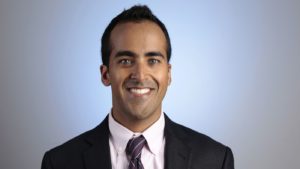MIDDLE EAST-TEHRAN: POLITICS – Iranians mark 39th anniversary of Islamic revolution with a milder display of nationalism

In orchestrated rallies across the country, Iranians took to the streets Sunday to mark the 39th anniversary of the Islamic Revolution, a show of strength by the ruling theocracy in the wake of antigovernment protests last month.
Demonstrations in Tehran and hundreds of other cities and towns, according to state-run media, showed that the government could still mobilize supporters. Civil servants and high-schoolers, children and grandparents turned out to commemorate the overthrow in 1979 of a secular, pro-Western monarchy.
This year’s festivities in Tehran took place in a relaxed, carnival-like atmosphere, lacking some of the bombast of previous anniversaries. American and Israeli flags were burned and the state-run Fars news agency published photos of one mockup of a ballistic missile.
But otherwise the rally in Tehran was marked by street vendors selling toys and handing out cookies to children walking with their parents under mild sunshine.
When I was a kid, I was very poor. Now I have a decent life. Why should I be unhappy?
Participants in the rally played down the recent wave of antigovernment demonstrations, which began in late December and spread to scores of cities nationwide. Thousands were arrested and at least 21 people died as demonstrators protested rising prices and official corruption, the most significant unrest to hit Iran in nearly a decade.
Yadollah Karimi, a 76-year-old sporting a white beard and walking with a cane, said he came out to celebrate the benefits of the revolution.
“The recent protesters were childish and simple; they have no idea what it was like before the revolution,” Karimi said.
Bagher Ashiyani, a 54-year-old demonstrator, held a placard quoting Iran’s supreme leader, Ayatollah Ali Khamenei, as saying: “In the 1970s we kicked America out from Iran; now we will kick America out of the region.”
“When I was a kid, I was very poor. Now I have a decent life,” he said. “Why should I be unhappy? Those who protested, they have economic problems but some thugs are misusing their anger to subvert the system.”
Addressing a crowd in Tehran’s central Azadi Square, President Hassan Rouhani called for all Iranians, from hardliners who support the conservative theocracy to reformists caling for greater political and social freedoms, to come together to support the revolution.
“I request that the 40th year of the revolution, the coming year, be the year of unity,” Rouhani said.
He also said Iran would continue to adhere to its commitments in the 2015 nuclear agreement it signed with the United States and other world powers, striking a typically defiant tone toward President Trump, who has threatened to back out of the deal.
The rallies in Tehran, as in previous years, afforded a chance for peddlers to sell fruits, olive oil, shoes, sweaters and shirts. Hundreds of makeshift kiosks were set up where people dispensed goods and nutritional advice.
One man sipping a free cup of tea sat brooding on one main road where demonstrators had gathered. Giving his name only as Ali, he said he was unemployed and disenchanted with the ruling system. He had planned to come to the rallies to sell belts, but couldn’t afford to purchase the inventory from a wholesaler.
“The revolution can’t do anything for me,” he said.
Shashank Bengali
.
ALSO
In an apparent first, Iran and Israel engage each other militarily
Iranians asked #Where_Is_She? Suddenly, it seems she’s everywhere
Special correspondent Mostaghim reported from Tehran and Times staff writer Bengali from Mumbai, India.
Shashank Bengali covers Iran for The Times. Follow him on Twitter at @SBengali
NOTE : All photographs, news, editorials, opinions, information, data, others have been taken from the Internet ..aseanews.net | [email protected] |
For comments, Email to :
JARED PITT | [email protected] | Contributor









